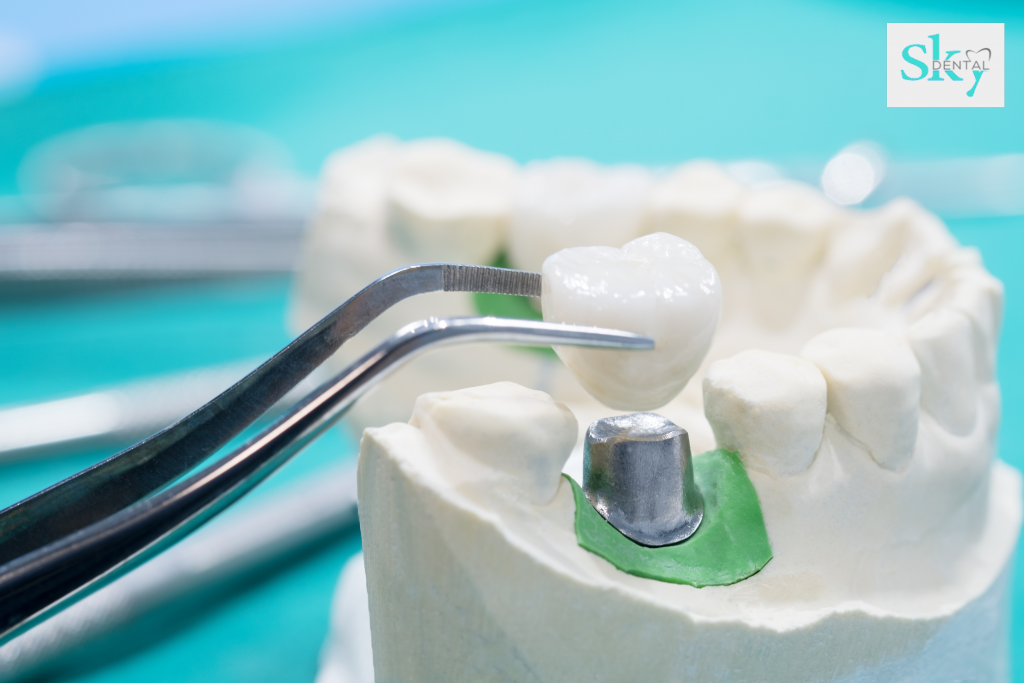A dental crown is a cap which represents a shape of a Tooth. It is placed over a tooth to improve its appearance and to restore its shape and size. There are thousands of people who use these dental crowns to fix all kinds of tooth and mouth problems. Crowns are permanently cemented on the cracked or damaged tooth. Dental crowns are custom made in every dental hospital in order to fit over each tooth. There are various types of dental crowns by using different materials like ceramics, metal, gold or resin.
The need for Dental crown
Dental crowns perform several important functions:
- These can replace weak teeth and broken teeth.
- A dental crown protects the cracked tooth from breaking further or to hold together parts of a cracked tooth.
- It supports the teeth that have large fillings when there is not much left.
- A crown can hold a dental bridge in place i.e. if you have missing teeth, dental bridges are useful to close or bridge the gaps.
- In the treatment of root canal or dental implantation, Dental crown is the finishing step.
What is a dental crown made of?
Crowns come with several types of materials like metal alloys, ceramics, porcelain and the combination of these three. There is a large history for the tooth replacement materials. The ancient Egyptians used animal teeth and pieces of bones as primary replacement materials. Later, artificial teeth have been replaced with materials like porcelain, ivory and also platinum. In this modern era, tooth replacements can include materials like synthetic plastic resins, ceramic composites, and metal alloys.
Steps of placing a dental crown
Initial
• The team removes the outer portion of the teeth in order to fit the crown easily. In some cases, they need some additional tooth structure to support the crown, then your dentist may build up the core of the tooth.
• Before making the dental crown, they must reduce the tooth size in order to fit the crown properly. Once after the reduction, the dentist will examine to provide the exact mould for the crown.
Preparing the tooth
• You may have both the temporary and permanent tooth. Having a temporary tooth may be sensitive to hot and cold. A crown is designed perfectly to fit the tooth.
• Once the tooth and tissues have become numb, the dentist will place a rubber dam over the tooth. This helps you in trapping old filling material, tooth structure and water from falling into your mouth.
• They remove the decay and place the composite core on the tooth. Once after placing the core, the dentist continues shaping the tooth and creates margin around the entire tooth like a shell until the excess tooth and filling have been removed.
Final impression
• After the preparation of the tooth, your dentist began to push your gum tissue away from the margins of a tooth by using a gingival retraction cord (a thin piece of cord similar to the piece of yarn). The dentist then inserts this cord around the tooth.
• Once after this process, the dentist will take an impression of your teeth. And this begins with applying a polyvinyl siloxane impression material around the prepared tooth.
• After filling the impression tray with corresponding impression material. Your dentist will insert the impression tray over your prepared tooth and asks you to bite it until the material is fully set. This takes three to five minutes to complete.
• Once the impression material has set, your dentist will remove the tray from the mouth.
Finishing
• If it is the permanent crown, before cementing the permanent crown the teeth has to be clean. After the tooth is completely numb, your dentist removes the temporary crown and cement from the tooth.
• Once the tooth completely dries, the dentist places the permanent dental crown. They will be need of Cotton rolls on both sides of the tooth in order to protect it from saliva or water in your mouth.
• Once the area around the crown dries, they place a bonding material on to the tooth. Once the bonding agent has been set, the permanent crown will fill with cement. Some cases need the curing light to set the cement completely.
• The final step is checking the bite. Once the bite is accurate, the tooth will also be free from excess cement. Now your dentist will give you some instructions for your new dental crown in order to avoid tooth sensitivity and tooth pain.
This article is intended to promote understanding the knowledge about general oral health. We suggest you seek the advice of your dentist before going with any medical treatment.



very nice post thanks